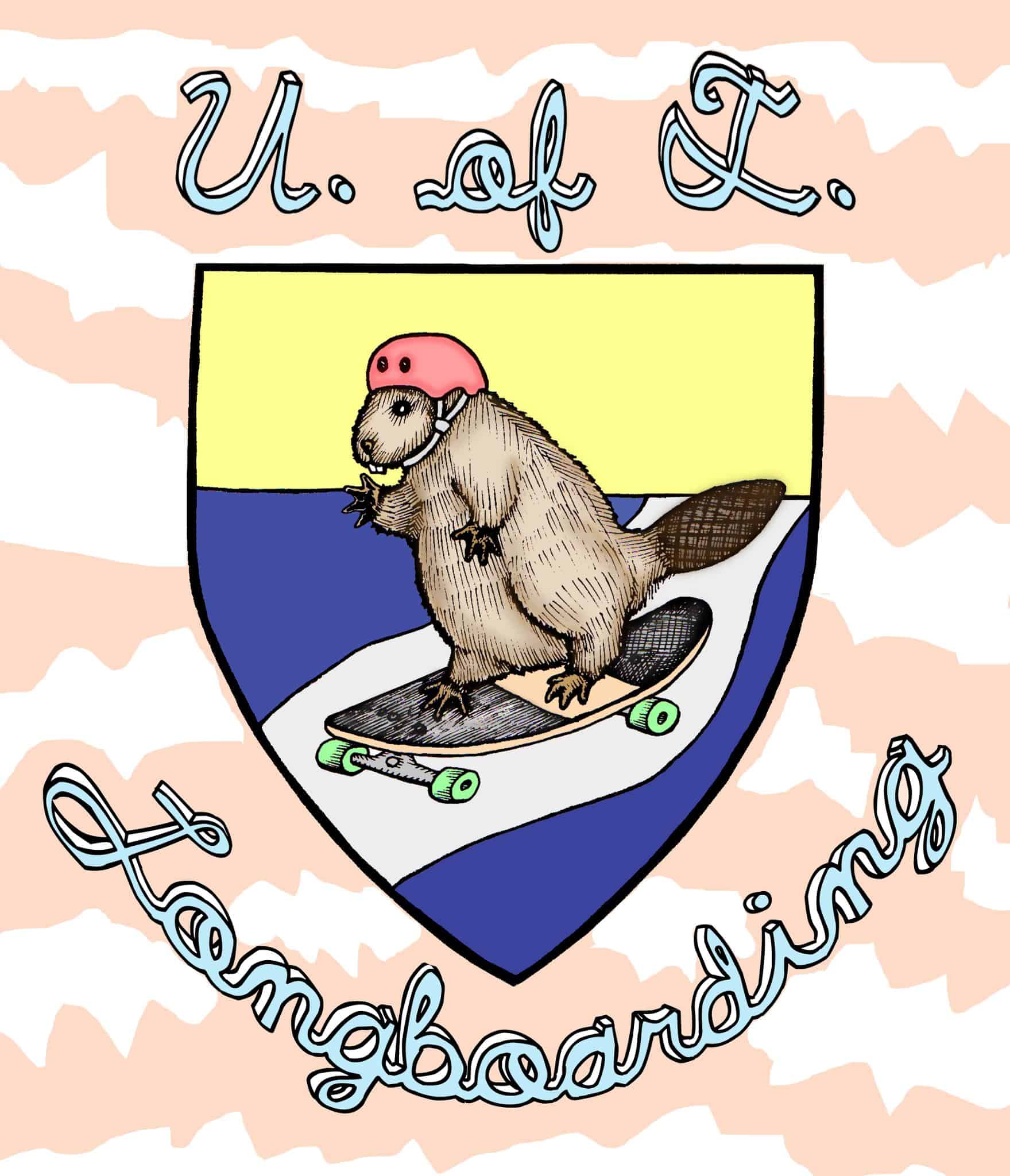It’s drizzling, but Cindy Zhou, first-year commerce student and president of the newly-formed U of T longboarding club, skated to our meeting. “Honestly, I’m just too lazy to walk. You get so used to getting around much faster when you skate,” she explains.
With the longboard becoming an increasingly popular mode of transport amongst Toronto urbanites, it was only a matter of time before U of T would have its own longboarding club. Two months in, Zhou and vice-president Cristobal Alvadaro — a biological anthropology grad student — are still figuring out the logistics. While many people signed up on Clubs Day, they were surprised by the number of people who had never been on a board before.
“We thought we’d get more people who were already into the sport,” Zhou says. “That’s been sort of a struggle for us, providing enough resources to accommodate all these people who want to learn how to ride.” At the weekly group sessions that the two have been holding since the beginning of the semester, they bring their own boards and safety equipment to allow curious first-timers to try out the sport. “If they like it, we encourage them to get their own board,” Alvadaro adds.
Zhou and Alvadaro met through Longboard Living, the Kensington Market-based longboarding shop that organizes weekly group rides and serves as a meeting point for local skaters. As an undergrad at U of T, Alvadaro saw the need for a hub to bring on-campus skaters together. This summer, as Zhou was about to start university, Alvadaro and Longboard Living storeowner Ryan Rubin approached her with the idea of starting a club on campus to get new people interested in the sport. “We both have a deep love for it and it’s the kind of thing where you want to share with people,” Alvadaro says. “There’s this slightly cliché saying in longboarding — ‘spread the stoke’ — and that’s essentially what we want to do.”
Outside of the university, there’s an Ontario-wide community, connected through the online forum ontariolongboarding.com. Skating crews within Toronto meet up regularly to skate together, and this “core scene” is actually very small, according to Alavadaro. “We’re basically the bridge [over the] gap [between] the two communities — U of T riders and the rest,” Zhou says.
Facebook is the club’s primary mode of communication. Times for group sessions, announcements for non–U of T related skate events, and advice about anything longboard — it’s all there. The group skating sessions so far have drawn an average of 6–7 people per meeting, and a surprising number of girls. “I’d say about 80–90 per cent [of those] who come out are girls,” Alvadaro estimates.
Though both Zhou and Alvadaro agree that the supposed differences between skateboarding and longboarding are more fiction than reality, they believe longboarding and its community are more approachable and inclusive than the male-dominated skateboarding scene.
With winter approaching, the scope of the club will broaden. Zhou and Alvadaro hope to put on movie-nights to screen longboarding videos, run board-building workshops, and — for experienced riders only — organize late night garage skating sessions.
At this point, the club is still trying to gauge the demand. Zhou and Alvadaro hope to eventually establish a community where each member is actively organizing group rides, where there’s exchange and cooperation among members. Ideally, the club will act as a facilitator like the Ontario Longboarding Forum but on a smaller scale. Both agree that longboarding is all-consuming — and sometimes that’s just what you need.


